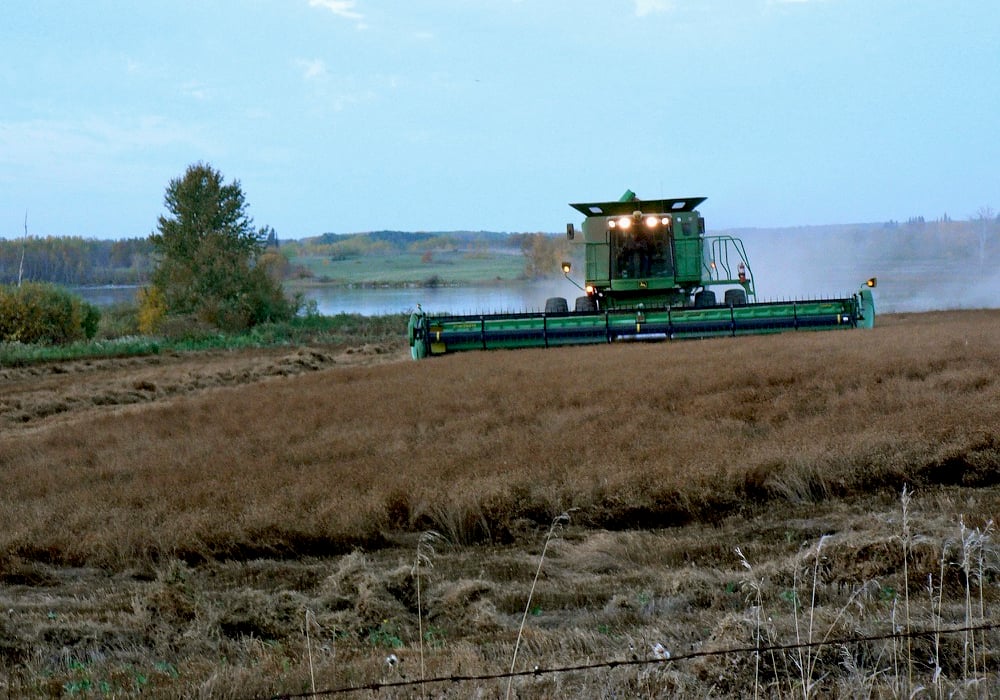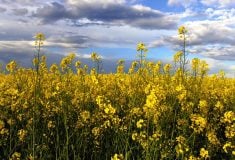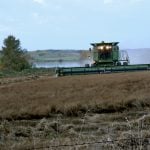Crops may not be the only casualties of drenched Manitoba soil. Under the right circumstances, superfluous rain can kill insect pests, too.
Most of Manitoba’s southwestern corner and parts of the province’s Interlake region were hammered with 176 to 200 per cent of normal precipitation between May 1 and last Sunday (July 6).
The Virden and Moosehorn areas, for example, were swamped by more than twice the normal precipitation. Up to 259 per cent of normal precipitation deluged the Brandon area. [See map]
Read Also

Most of Manitoba harvest wraps up for 2025
Manitoba Agriculture issued its final crop report of 2025, showing the overall provincewide harvest at 97 per cent complete as of Oct. 20. Nearly all major crops have finished combining, with 37 per cent of Manitoba’s sunflowers finished, plus 71 per cent of grain corn and small amounts of soybeans and potatoes left to do.
Newly-hatched grasshoppers are particularly vulnerable to a glut of water, the latest Manitoba insect and disease update notes. Young grasshoppers need to feed freely as they have few fat reserves. Wet, cool weather can put a damper on hopper feeding, ultimately killing many.
Disease is also likely to knock down hopper populations if cool, wet conditions last a couple weeks, the province noted.
Adult hoppers don’t usually die by drowning, but this year might yield some exceptions. A Nebraska study has found grown grasshoppers had to be submerged for 7.5 to 21 hours to kill half the population. Half the nymphs would perish if immersed for three to 13 hours.
The Manitoba report stated “in some areas this year, grasshopper mortality by immersion is a possibility.”
Summer flooding may also cut wireworm numbers. A study in British Columbia has looked at how submerged wireworms fared at different soil temperatures. Flooded soils between 10 C and 20 C killed 90 per cent of the wireworms in nine to 26 days, depending on soil type. But waterlogged soils with temperatures of 5 C took about two months to kill wireworms.
Wheat midge probably haven’t made an entrance yet in Manitoba, the report noted. More than 145 mm of rain in May and June can delay emergence by two to eight days. Wheat midge emergence might be postponed even more in many areas because of surplus rain.
The wasp that parasitizes wheat midge should be emerging now, the report said — but May and June rains topping 145 mm can also delay the wasp by one to 11 days.
— Lisa Guenther is a field editor for Grainews at Livelong, Sask. Follow her at @LtoG on Twitter.















